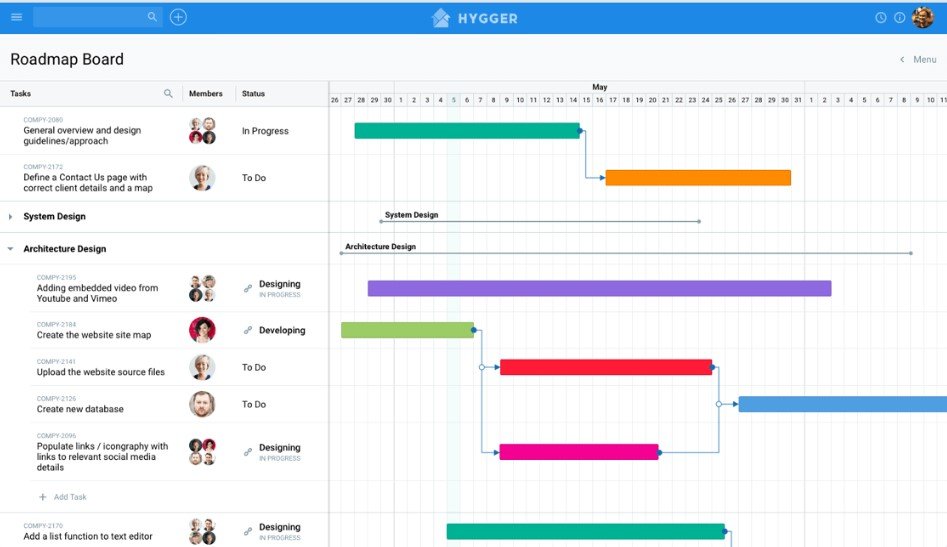Planning is one of the most important processes that compose successful project management. The logical outcome of project management planning is a project plan.
In this post, we share everything you need to know about successful project planning.
Contents
What is a project plan? Quick definition
A project plan outlines the course of work for every team member, considering the constraints of scope, schedule, and budget. It describes all processes that are aimed to bring the proposal to life.
Why is project planning important?
Have you ever traveled without a map or without preliminary looking at the route? The same thing with the project – to start it without a plan makes no sense.
You may eventually get where you are trying to go, however, it will take a lot of time and money. The common statistics show that so many project failure reasons could have been resolved through better project planning.
Projects with weak plans can lead to scope creep, missed deadlines, and blown budgets.
Luckily, there are 5 typical phases of any project that will help you to succeed. They all will need to be addressed by your project plan.

5 stages of writing and selling a killing project plan
-
Defining a project
Determining what you are trying to reach is the very start for any project plan, no matter you’re designing an app or opening a new store.
It’s not about trivial writing your desire on a napkin. Any well-created project plan example will probably include the following points:
- Goals and objectives. You should clearly understand what you’re trying to achieve with this project externally and internally. The popular SMART goals concept for goals defining (how to set specific, measurable, achievable, realistic, and time-bound goals) will assist perfectly.
- Changes. Any project will most likely experience changes that you will need to deal with, no matter how carefully you plan. Try to identify what will definitely be out of the project scope. This time is also good for determining who will be responsible for approving scope changes.
- Criteria for success. Identify specific measures to understand if this project is a success or failure? (meaning delivering on time and on budget, meeting a certain level of quality, etc.)
- Deliverables. Define and list all important deliverables for your project, write examples and be as detailed as possible.
- Resources. You also have to determine all resources, personnel, budget and time required to meet the project objectives and deliver a successful outcome.
- WBS (work breakdown structure) will help you to understand what needs to be delivered and when. Use it to establish your baseline schedule, deadlines, and milestones.
-
Identifying risks and constraints
One of the most essential skills for project managers is the ability to identifying potential risks and setbacks before they happen. This skill helps them to navigate rough waters.
Depending on the size of the project and the company’s size, the person responsible for risk management is assigned. There are great project management software solutions that can make risk management a cinch.
This phase is not only about trying to get ahead of chaotic conditions, but it’s also about the importance of documenting all assumptions or constraints, such as the source of project funding or the resources available.
-
Gathering people
Project management surely involves people management, and the more thorough you perform the job in the initial steps, the easier this phase will be.
Organizing your project means identifying the following roles:
- Customers who will receive the final product.
- Stakeholders – the individuals or groups with a vested interested in the successful project completion.
- Project roles and responsibilities. You should also establish the organizational hierarchy for your project – the person or people who will have the final say on decisions.
-
Listing the key resources
After defining the requirements needed for effective project completion and identifying human resources required to perform the work, it’s time to focus on the specific resources needed to get to work.
These project resources may include the following:
- Tech base (computers, software, mobile devices)
- Vehicles
- Physical materials
- Salary
Combine all the resources you need, count the costs and inform your budget and resource management.
-
Establishing a communication plan
Now you have a clear project with a team, defined schedule, resources, and the budget. The only important thing that you are missing is a project communication plan.
Often projects failure just because of the poor communication.
However, if you establish good team communication with meeting deadlines and staying on budget, you’ll definitely get successful outcomes.
A qualitative project communications plan template should consist of:
- Communication objectives
- Specifying target audiences
- Content for communication
- Communication methods
In order to compile all the elements of such a plan into one picture and correctly visualize it, you may use a smart online roadmap, which you can find in most project management tools.

Takeaways
You shouldn’t rush while planning your project. It requires time and it’s worth doing it properly because if you don’t, you will definitely face problems as people will not understand what they are supposed to do and why.
Effective planning will set you up for success and provide confidence in knowing that you get all processes, systems, and tools in place to deliver a perfect outcome.





